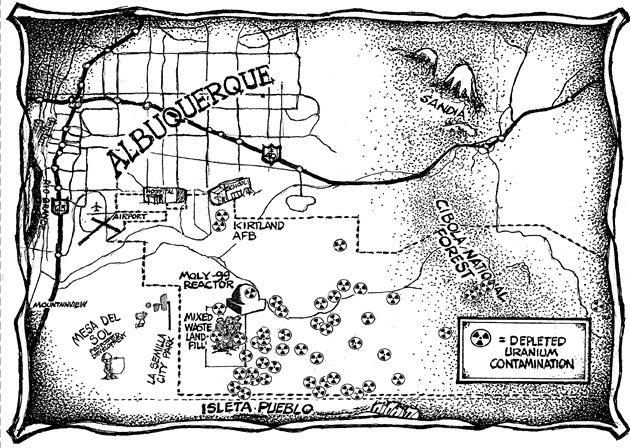
Institute for Energy and Environmental Research (IEER)
Files
Download Full Text (813 KB)
Document Type
Report
Date
8-2006
Description
The Feed Materials Production Center near Cincinnati, Ohio, often called the Fernald Plant or simply Fernald, was the largest producer of uranium metal for the nuclear weapons complex during the Cold War. Its processes for uranium production ranged from ore processing, to conversion of uranium into various chemical forms, to scrap recovery, to machining of uranium metal. Fernald also processed thorium-232, but in much smaller amounts.
A large volume of radioactive waste was created at Fernald. Fernald also received radioactive wastes dating from the World War II Manhattan Project, which created the bombs that were used to destroy Hiroshima and Nagasaki. These wastes resulted from the processing of very high grade uranium ore from the Belgian Congo, called pitchblende, at the Mallinckrodt Chemical Works in St. Louis, Missouri. Fernald also processed some Belgian Congo pitchblende. Since pitchblende had very high uranium content, it also had a high concentration of the decay products of uranium-238 and uranium-235. The decay products include thorium-230 and radium-226 from the U-238 decay-chain and protactinium-231 and actinium-227 from the U-235 decay chain. Some other high grade ores were also processed at Fernald.
The wastes from processing of high grade ores were called K-65 residues and were stored in two silos at Fernald, called Silos 1 and 2. These silos contained most of the radioactivity in the waste at Fernald, at concentrations that far exceed those found at mill tailings sites across the United States.'The waste from processing uranium ore concentrates was known as “cold metal oxide” waste. It was relatively low in radium-226 but had high thorium-230 content. It was stored in Silo 3.
The wastes in these three silos are very long-lived (thorium-230 has a half life of about 75,000 years). Given the high concentration of thorium-230 in all three silos, as well as the large volume of the wastes, the wastes presented rather unique challenges for processing and off site disposal as well as for the long-term stewardship of the disposal sites.
This report provides a case study of the emptying of the K-65 silos of their waste, the processing of those wastes for long-term storage or disposal, and the long-term radiological consequences of how the Department of Energy (DOE) has approached those responsibilities.
This research was completed money allocated during Round 5 of the Citizens’ Monitoring and Technical Assessment Fund (MTA Fund). Clark University was named conservator of these works.
If you have any questions or concerns please contact us at digitalrepository@clarku.edu
Publisher
Institute for Energy and Environmental Research (IEER)
Format
Keywords
nuclear weapons, nuclear weapons testing, environment, non-governmental organizations, United States Department of Energy, tribal governments, environmental cleanup, radioactive fallout, radioactive waste
Rights
Copyright belongs to the authors. Clark University was chosen by the non-profit peace and environmental groups as the conservator of these reports; our right to distribute these works ensures they remain available to the public in perpetuity as intended. Reuse at your own discretion with with due deference to copyright holders.
Location
Takoma Park, MD
Recommended Citation
Institute for Energy and Environmental Research (IEER); Makhijani, Annie; and Makhijani, Arjun, "Shifting Radioactivity Risks: A Case Study of the K-65 Silos and Silo 3 Remediation and Waste Management at the Fernald Nuclear Weapons Site" (2006). Institute for Energy and Environmental Research (IEER). 4.
https://commons.clarku.edu/ieer/4



